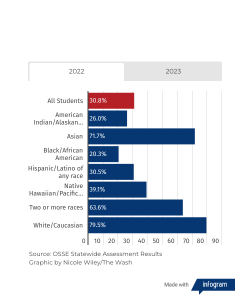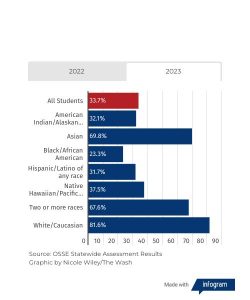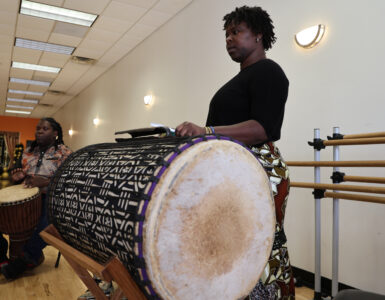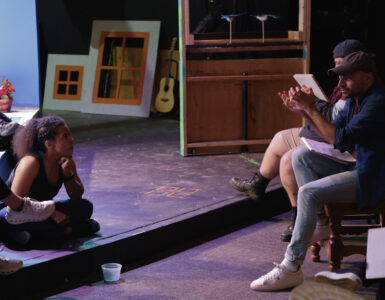The agency overseeing DC Public Schools has reason to celebrate this year, as student test scores have increased across the board since the COVID-19 pandemic. The Office of the State Superintendent of Education (OSSE) has begun implementing new strategies to keep student scores on the rise.
Hispanic and Latino students are a fundamental focus of their new plan.
The Wash reviewed four years of assessment reports and found that while OSSE and DCPS have acknowledged different demographics, this is the first year where culture is at the forefront of the agencies’ future plans.
In the last two statewide assessment results from 2019 and 2021, the agency emphasized the need for extra attention to students with disabilities and economic disadvantages.
Race and culture were largely missing from the public conversation until now.
This year’s assessment includes initiatives considering culture, such as DCPS’s Math Strategic Plan, which “explores culturally responsive math instruction.”
This fall, the first Math Teacher Bootcamp started, which trains over 200 teachers on foundational math skills that students lack. Also, beginning in FY 23-24, D.C. schools will receive $335,000 for High Quality Instructional Materials.
Additionally, DCPS has implemented new reading books that showcase a variety of backgrounds and identities. The reading series will also be published for the first time in Spanish in the 2023-24 school year.
Students enrolled in DC Public Schools, Ward 1, increased their standardized test scores last year by 2.6 percent, although it still ranks second to last among the Wards for score improvement.
Hispanic students, who make up the majority of those enrolled in Ward 1 K-12 schools, also saw an increase in scores despite having a lower percent increase than other racial groups.


Besides implementing new learning methods and materials, the OSSE also looks at teacher diversity in its schools.
The most recent demographic information from 2022 shows that only 10 percent of DC’s teacher workforce identifies as Hispanic/Latino, while Hispanic/Latino students make up 19 percent of all enrolled students.
In Ward 1, where Hispanic students make up a more significant proportion of the student body at 59 percent, only 23 percent of teachers share the same ethnicity.
Michael Hansen, Senior Fellow at the Brookings Institute, said, based on his original research, increasing racial matching of students with teachers is beneficial for reasons both inside and outside the classroom.

“We do have reason to believe that test scores would increase by hiring more teachers that match the race of the students they teach,” he said.
He said cultural understanding plays one of the most significant roles in reaching this conclusion. A large reason for absenteeism in school, especially among Hispanic/Latino and Black students, is suspension, specifically suspension due to insubordination.
Hansen said we have to consider these statistics as a possible result of teachers of different races’ lack of cultural understanding.
“How a teacher perceives a student’s actions is important, and with a teacher of the same racial or ethnic background, they can translate some of those cultural differences,” he said.
“If students of color are getting suspended more than White students, we have to ask how White teachers are viewing insubordination versus a teacher of the same race.”
Emily Gasoi, former Ward 1 representative on the Board of Education, sponsored a 2020 resolution in support of measures that would incentivize the hiring and retention of more Hispanic teachers in DCPS.

“I was aware that I represented the ward with the largest number of Latino families and children, and I wanted to be accountable to my constituents on this issue,” Gasoi said.
She said although the resolution wasn’t binding in any way, it was still an important advocacy document that the Washington Teachers Union now uses as an outline for framing their recommendations.
Since the document’s release, OSSE has begun sponsoring H-1B visas for teachers once they are selected for hire. This visa provides immigrant teachers more benefits and security than a J-1 visa, getting them one step closer to acquiring a Green Card.
Additionally, DCPS has updated its licensure policies to be more inclusive of Spanish speakers. OSSE now accepts passing scores on the PCMAS test for native Spanish speakers instead of the English Praxis 1.
The PCMAS is also known as the Puerto Rico Teacher Certification Test.
Addressing the cultural issues, OSSE emailed The Wash writing, in part, “We are familiar with the research about teacher and student demographic alignment having a positive impact on student learning, and have led, supported and will continue to support initiatives aiming to diversify the profession.”















Add comment